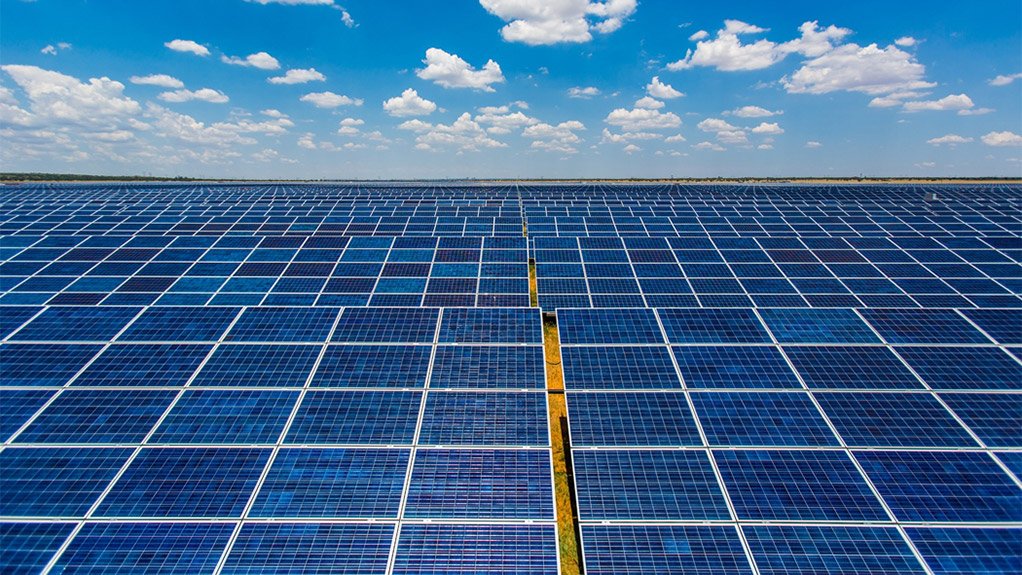Public Enterprises Minister Lynne Brown, who in June criticised the high cost of renewable energy, offered a tacit acknowledgement on Tuesday of the growing competitiveness of solar and wind, while calling for a long-term deal with the renewable-energy sector to avoid job losses in the energy sector.
Speaking at the POWER-GEN and DistribuTech Africa Conference in Sandton Brown said the deal should go “beyond the price Eskom pays per kilowatt at the check-out counter, although that is obviously important”. Any deal should also incorporate the necessity for “serious localisation and labour upskilling or reskilling strategies”.
The Minister, therefore, dismissed arguments that the deployment of renewable energy provided a “simple” solution to decarbonising the country’s coal-heavy electricity system.
“Things are not quite so simple in a developmental State, where coal-fired energy has formed the spine of the economy for generations. What about jobs? What about the economies of coal-mining towns? What is more important, people’s ability to eat in the short term, or the earth’s long-term ability to breathe,” the Minister asked rhetorically, while affirming that both challenges needed to be addressed simultaneously.
The bulk of Eskom’s 44 GW, 29 power-station fleet is made up of coal-fired power stations, which employ many of its 40 000 employees directly, while also creating tens of thousands of coal-mining jobs upstream.
Earlier this year, Eskom threatened to close five coal-fired power stations, partly to accommodated the introduction of new wind and solar plants. However, Brown subsequently instructed the State-owned utility, over which she has oversight as shareholder Minister, to hold back on any closure until a full economic assessment had been completed.
Brown’s statement marks a significant departure from her recent presentation to the Parliamentary Portfolio Committee on Public Enterprises, where she lamented the high cost of the electricity Eskom was buying from the renewable-energy plants procured by the Department of Energy since 2011. She told Parliamentarians in June that the electricity from the renewables plants was costing Eskom R2.14/kWh, while the utility was only able to charge consumers R0.84/kWh.
The statement has been broadly criticised by the renewables sector for ignoring the fact that the tariff-setting methodology ensures that the costs associated with the renewables plants are treated as full pass-through so as to place no financial strain on the utility. It also ignores the sharp fall in the costs associated with onshore wind and solar photovoltaic (PV) both globally and in South Africa, which has made such projects up to 40% cheaper than new baseload coal.
Brown said the DoE would soon publish a new Integrated Resource Plan (IRP), which would embrace a move away from South Africa’s dependency on coal. She indicated that the plan would embrace a new energy mix derived from coal, gas, and nuclear and renewable resources.
Earlier Finance Minister Malusi Gigaba unveiled ‘Government’s Inclusive Growth Action Plan’, which included the finalisation of the ‘lowest cost’ IRP in a list of 14 interventions to stimulate growth.
The action plan states that a lowest-cost IRP should be published by February 2018, “taking into account extensive comments received during public consultation” on the draft IRP Base Case, released for public comment in November last year.
The DoE received public comments until March 31, many of which criticised the constraints place on the yearly deployment of onshore wind and solar PV to 2050.
It is widely anticipated that the proportion of renewable energy could grow materially in a lowest-cost IRP, owing to the sharp decline in solar PV and online wind costs in recent years and should the limitations on renewables deployment rates be eased.
Edited by: Creamer Media Reporter
EMAIL THIS ARTICLE SAVE THIS ARTICLE
ARTICLE ENQUIRY
To subscribe email subscriptions@creamermedia.co.za or click here
To advertise email advertising@creamermedia.co.za or click here













